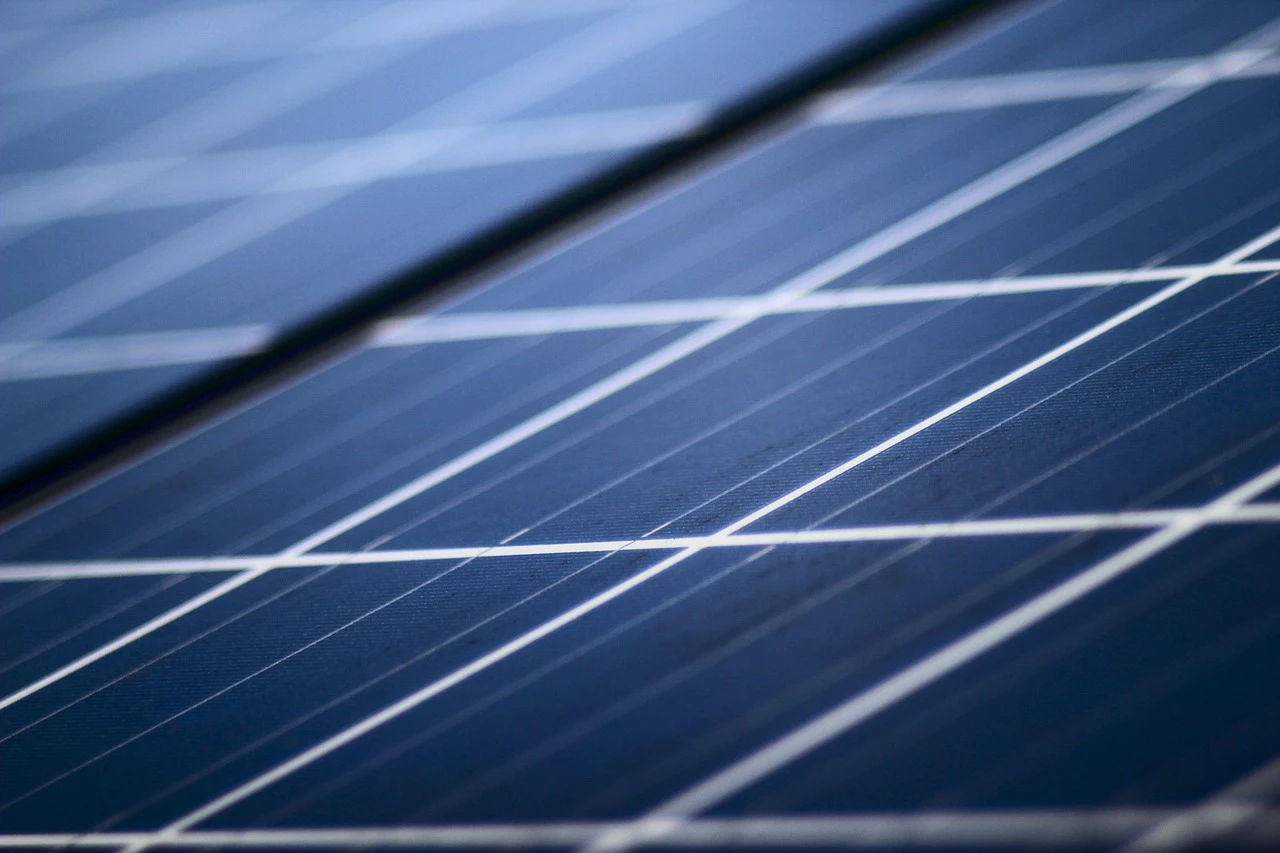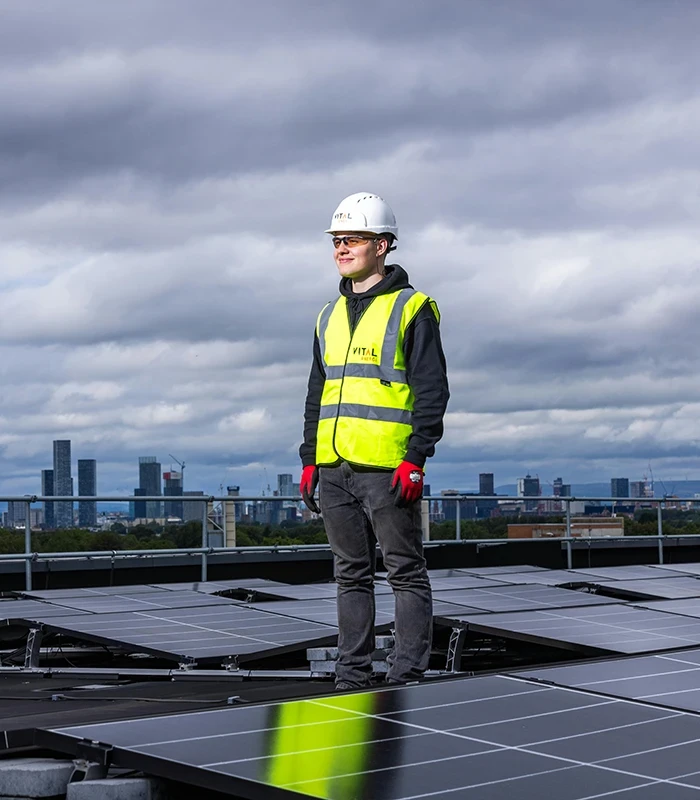
Relying on its own patented technology and independently developed equipment, Yangzhou Shanhong Environmental Protection Technology Co., Ltd. innovatively uses a combination of "mobile" physical disassembly and "green solvent" high-purity step-by-step dissociation to achieve high-level, low-carbon, energy-saving separation and comprehensive utilization of retired photovoltaic component materials.
Processing 10,000 tons of retired photovoltaic modules annually can reduce carbon emissions by 45,000 tons. The production of photovoltaic modules requires the emission of a large amount of carbon dioxide. Recycling the materials separated from retired photovoltaic modules to manufacture new photovoltaic modules can greatly save energy, save raw materials, and reduce carbon emissions; the use of produced photovoltaic modules will also greatly reduce carbon dioxide emissions.
The development of this technology responds to the country's dual-carbon strategic goals, promotes energy security, drives economic development, stimulates employment, reduces the cost of photovoltaic power generation, improves the level of technological innovation in the photovoltaic industry, and promotes the sustainable development of the photovoltaic industry.
| Retired Components | "Mobile" physical disassembly equipment | Output | ||
|
Field Components
|
Disassemble the frame and junction box
|
|
||
Glass and back panel grinding
|
||||
| "Green Solvent Method" High-Purity Cascade Dissociation Device | ||||
| Cleaning, cutting and drying | ||||
| EVA, battery cell separation and recycling | ||||
| "Wet method" screening and silver removal | ||||
| Filter refunds |
|
|||||||||||
|
|||||||||||
|
1. Disassembly of frames and junction boxes: Through the self-developed automation program and AI image recognition system, the recognition, grabbing speed and accuracy of the junction box are improved, and the disassembly of the junction box and the frame is integrated in one station. The image recognition success rate is not less than 95%, and it can operate continuously and stably.
2. Glass and backplane grinding: The self-developed core equipment controls the grinding accuracy of glass and backplane according to the different specifications of the components with the corresponding program. Broken glass and backplane are discharged and collected from different discharge ports (CN202410469590.6).
After the above process, the weight is reduced by at least 80%, and the component "laminated parts" are obtained. The separated materials (glass, aluminum, copper, plastic, etc.) are handed over to downstream factories for recycling. The "laminated parts" enter the next link for decomposition and processing.

3. Cleaning, cutting and drying: pre-treat the "laminate" to facilitate the complete decomposition of the subsequent EVA.
4. Separation and recycling of EVA and battery cells: The crushed "laminated parts" are decomposed by "green solvent" (CN202211107507.8) to obtain EVA (as shown in the figure), battery cells, solder strips, and broken glass. After screening and drying, EVA, solder strips, and broken glass can be recycled, and the battery cells enter the next purification stage.
5. Screening and silver removal: The battery cell mixture is extracted step by step in the reactor through wet process equipment to recover precious metals such as silicon, silver, lead, and tin.
 Schematic diagram of EVA precipitation
Schematic diagram of EVA precipitation
Achieve 100% recycling of junction boxes and frames, and achieve glass and backplane mass recycling rates ≥ 90%. Achieve total component mass recycling rate ≥ 96%; metal recycling rate ≥ 96%; silicon recycling rate ≥ 96%; achieve recycling of organic solvents in the EVA recycling process, EVA reaction rate ≥ 99%, EVA recycling rate ≥ 98%, and the technical indicators are generally higher than the industry level during the same period.
The project's "mobile" disassembly equipment uses physical methods to "reduce" retired components to laminated parts, and there is no pollution emission in the process. At the same time, the solvent used in the "green solvent" high-purity cascade dissociation device is closed and recycled, without wastewater and waste gas emissions. The production line is environmentally friendly and has natural advantages over other pyrolysis and chemical methods.
At the same time, the "mobile" disassembly equipment can be operated and recycled nearby, with a designed production capacity of 160 pieces/hour, which greatly reduces transportation costs; the "green solvent" can be recycled at a low cost; the EVA reaction time is ≤50mins, and the energy consumption is 0.1kw/kg component.
1. Local operation: The retired components are “weight-reduced” nearby (weight reduction of at least 80%). After the retired components are reduced to 13% at the project site, they are concentrated in the factory for unified degradation treatment. This will greatly reduce transportation costs, avoid investment risks, and provide the possibility for commercialization as soon as possible.
2. High integration: AI image recognition technology is used to achieve the disassembly of the frame and junction box at the same station, and the image recognition success rate is not less than 95%.
3. Strong compatibility: Due to the use of physical grinding methods, retired components of various sizes and degrees of damage can be accepted.
4. High stripping accuracy: The innovative grinding process is supplemented by refined equipment to achieve a glass removal accuracy of 0.1 mm.
1. High decomposition efficiency: mass recovery rate ≥ 96%; metal recovery rate ≥ 96%; silicon recovery rate ≥ 96%; all higher than the industry level.
2. Realize the recycling and reuse of EVA (the characteristics of patented technology), increase the recycling income of EVA, and increase the market competitiveness of the project.
3. Fast decomposition speed: the weight-reduced laminate is fully and completely decomposed within 2 hours.
4. Environmentally friendly: green decomposition solution can be recycled and zero emission.
5. The dissociation device and green decomposition solution are independently developed and low cost.


| Technology Type | Disadvantages | This Project |
| Incineration method | Environmental pollution, low recycling efficiency, high energy consumption, high cost | Technology advantage |
| Hot knife, pyrolysis method | Poor continuous production capacity, TPT residue is prone to fluoride contamination | Technology advantage |
| Pure chemical method | Strong acid and strong base are not friendly to the environment | Technology is superior |
The company has independent intellectual property rights. Currently, it has applied for 8 invention patents and has accepted 17 utility model patent applications. It participated in the preparation of the national standard "Technical Requirements for Photovoltaic Module Scrapping Evaluation".

Representative countries such as Germany, France, and Italy have already established photovoltaic module recycling plants with certain processing capabilities: Germany's Flaxres, Reiling Unternehmensgruppe, France's Veolia, Italy's GSE, the United States' First Solar, Japan's NPC, etc. However, most of them are still in the pilot stage, with high energy consumption, low efficiency, small processing scale, and have not yet formed commercialization.
Some domestic companies have also made some attempts to recycle retired modules. The main technical routes include "pyrolysis method", "hot knife method", "chemical method", etc. In general, domestic photovoltaic module recycling technology is basically synchronized with the international level, and has independent intellectual property rights in many aspects, but it has not been applied on a large scale.
The high-level separation and comprehensive utilization technology of retired component materials adopted in this project has complete intellectual property rights. Compared with other domestic and foreign solutions, it has the characteristics of low energy consumption, less new pollution, low material requirements, high output purity, strong mobility, and high mass productivity, and is at the leading level compared with its peers.